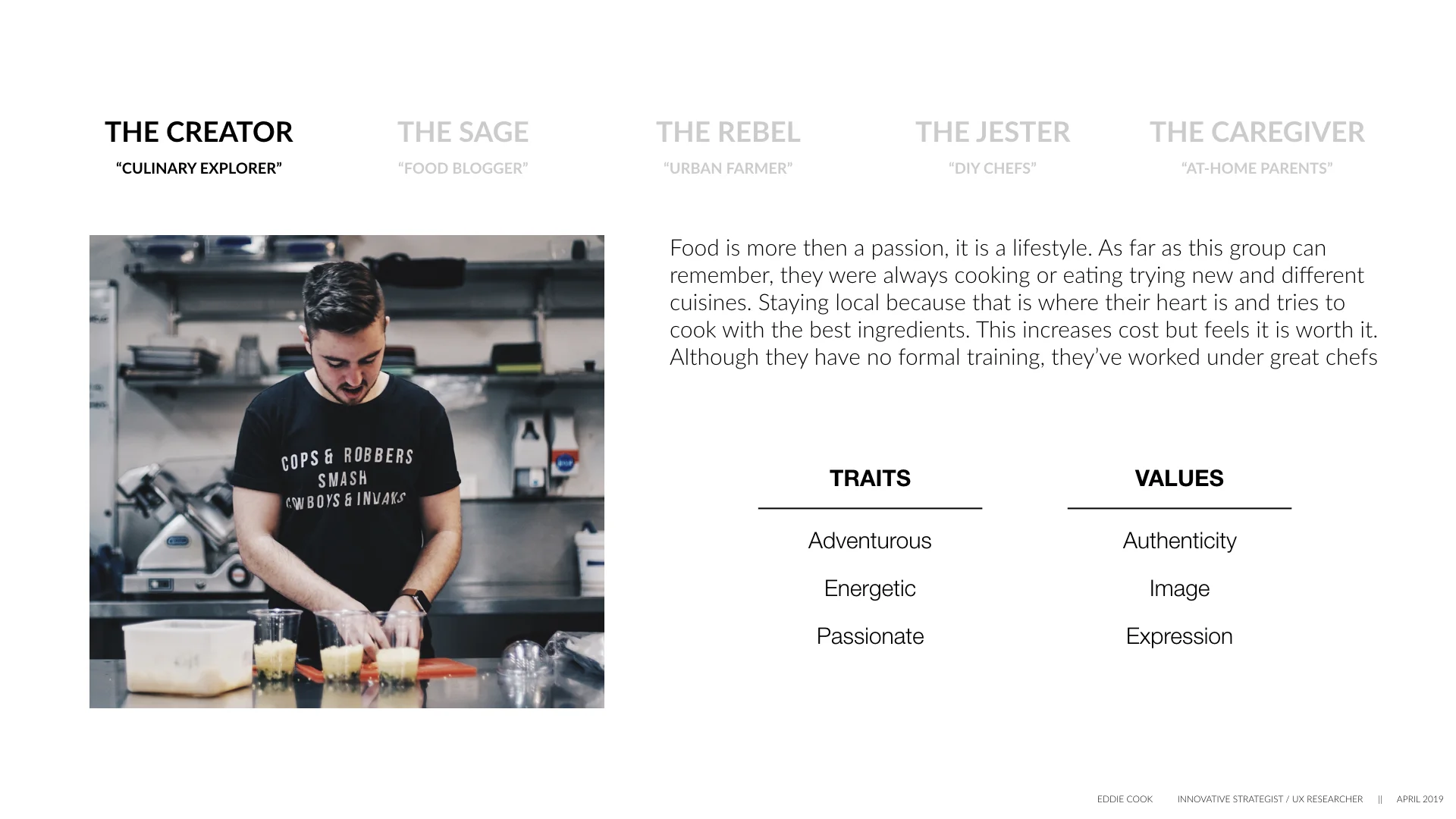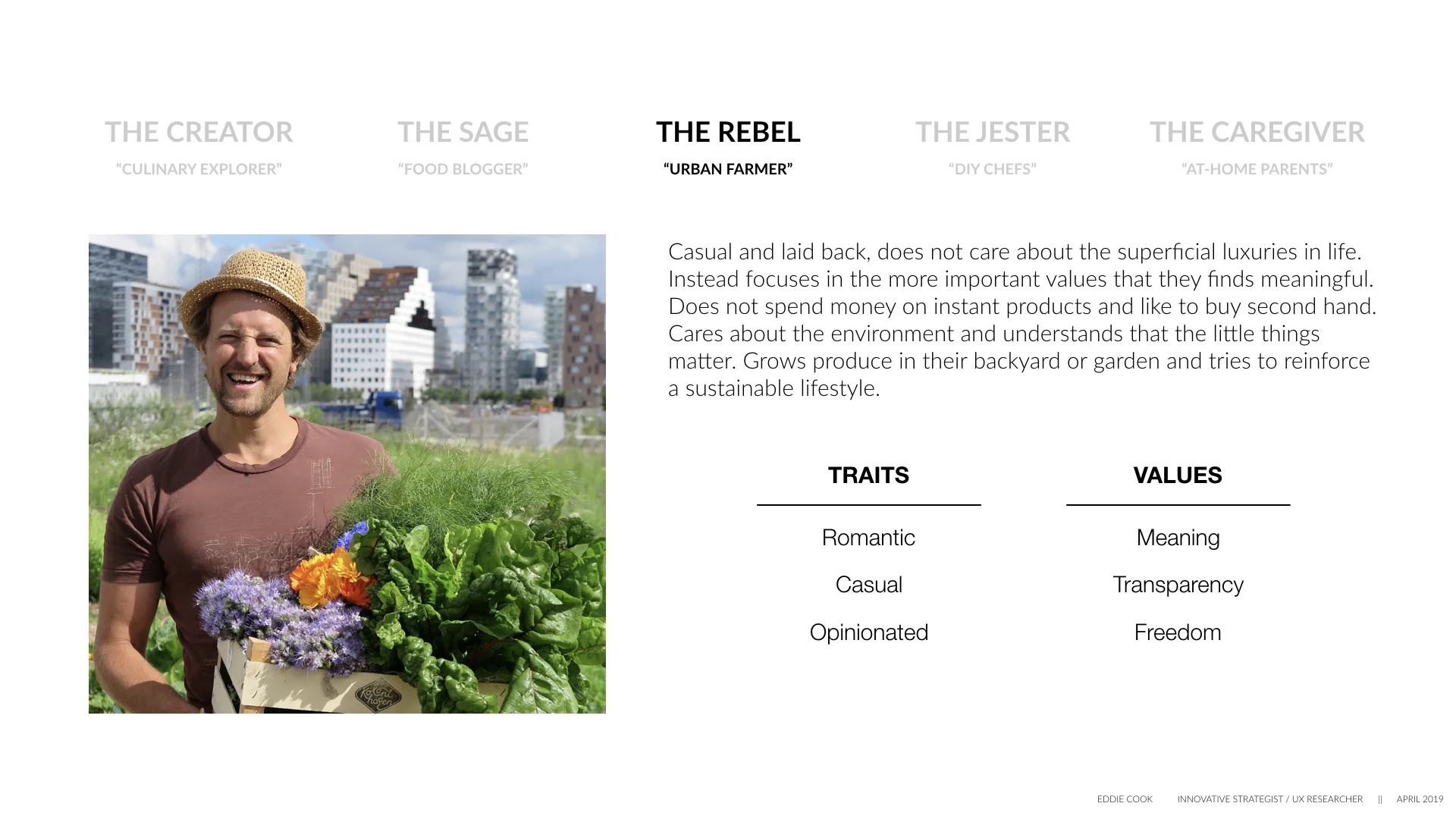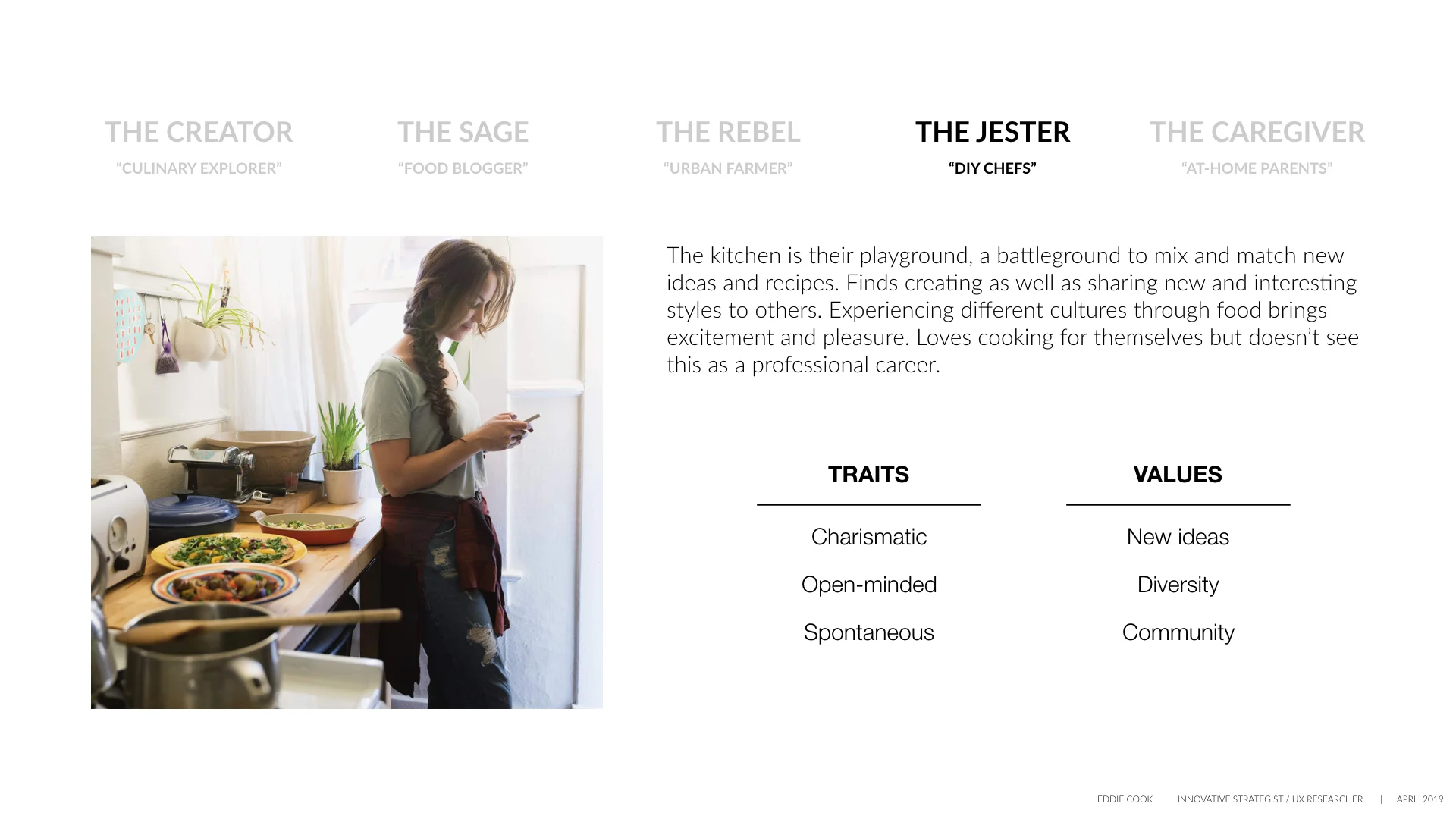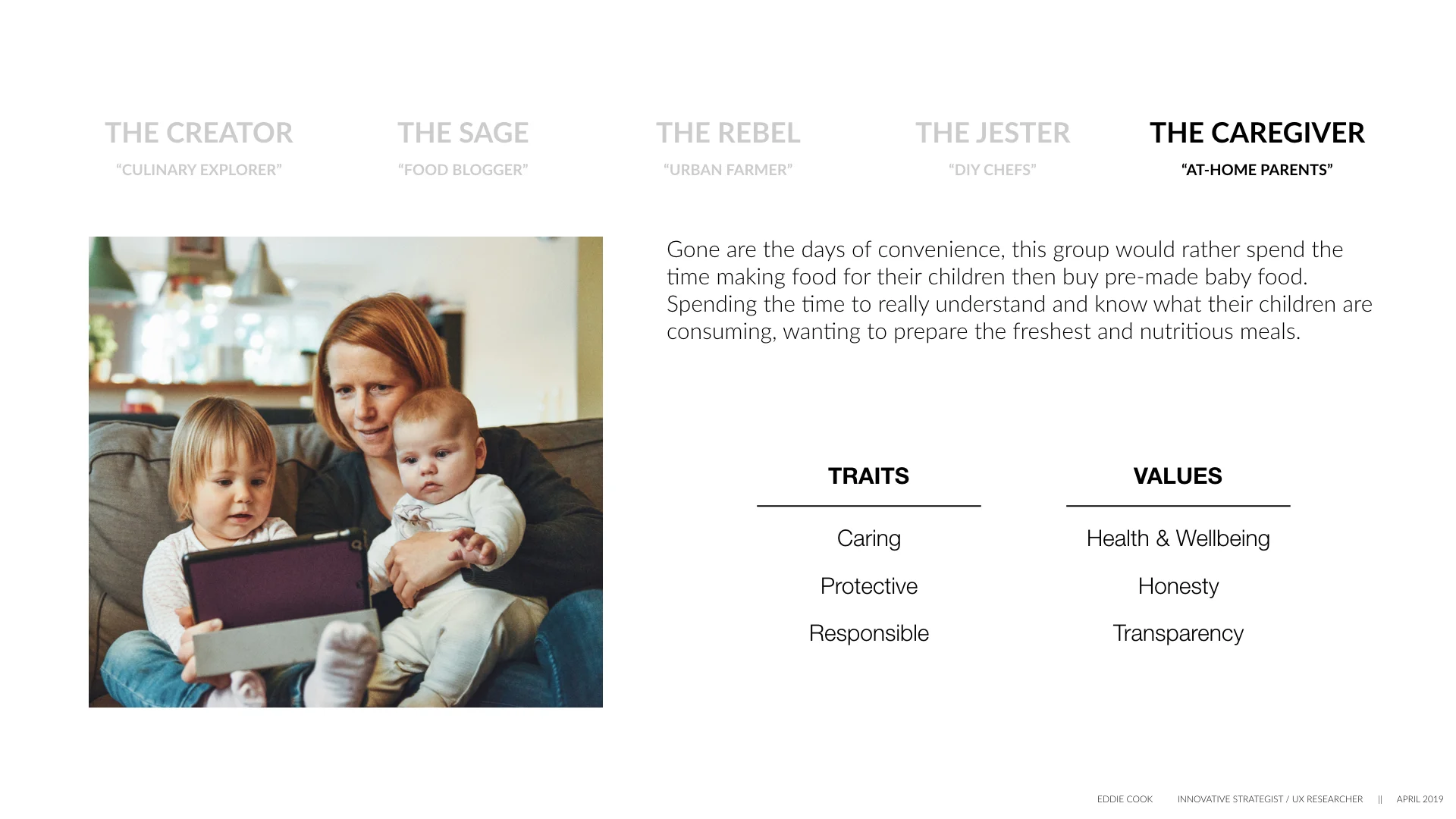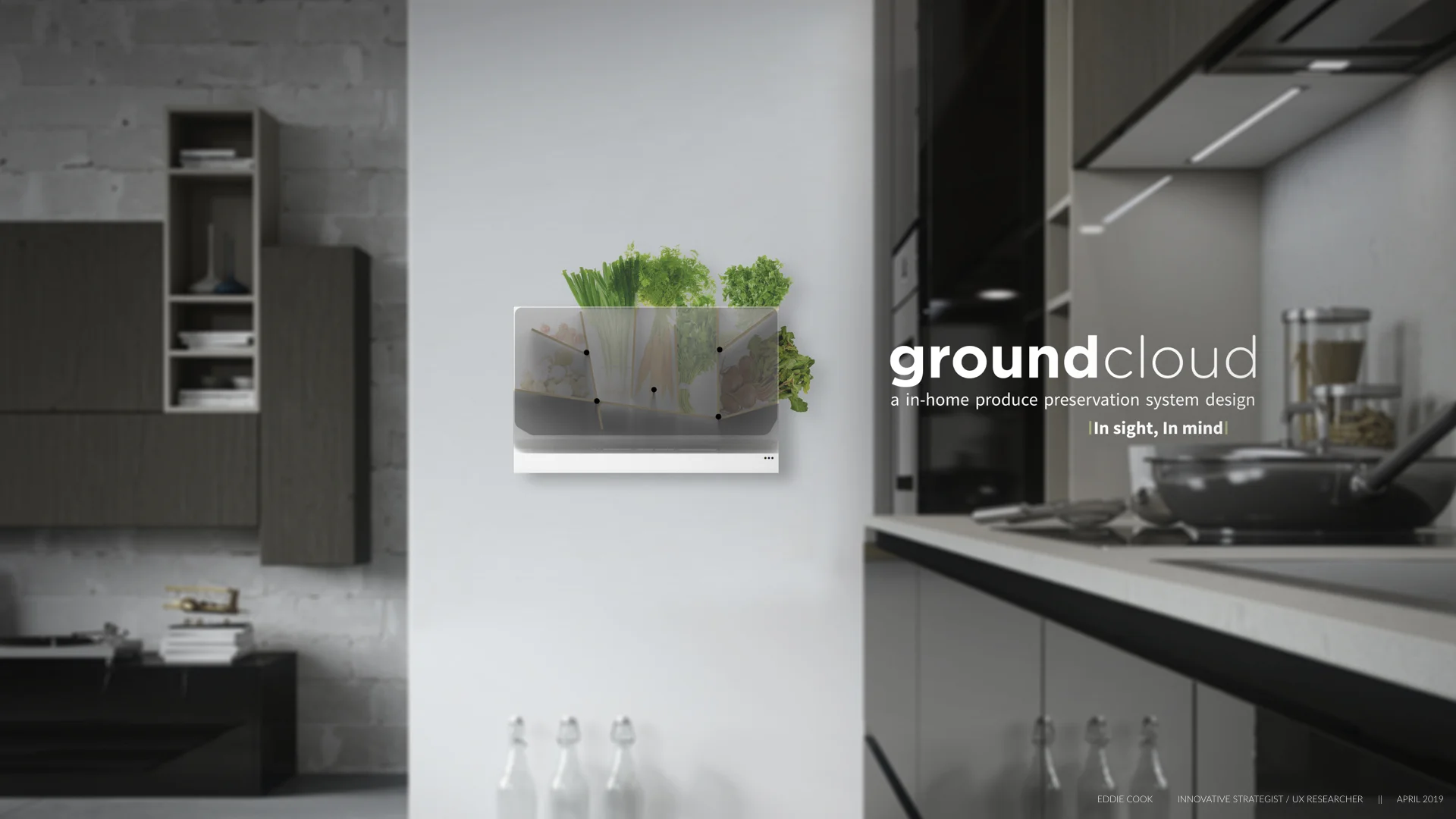Keeping fresh produce in sight, in mind
Summary
In 14 weeks, explore the future of food preservation by breaking down the food cycle to identify where we could impact food waste.
Food waste is a huge problem that we face. Almost 40% of all food in the US goes to waste and every day and it has been found that food waste generated in the consumer (in-home) stage amounts to almost 23% of the overall waste.
By studying the users on how they purchase, their lifestyles and behaviors, how they discard and waste manage, we were able to gain a grasp on how to approach the problem that was simple to use and easy to implement.
Groundcloud hopes to alleviate this issue by implementing a a different method of produce storage and preservation. It does this in 2 stages:
Keeping the produce in sight. This reduced the users from overbuying, forgetting, and/or decaying.
Unlike refrigerators that use cold air to slow down the rate of decay, by hydrating and rejuvenating the produce to promote “growth” in order to preserve.
All information in this case study is my own.
The Challenge
The goals of this project was to understand the users and how they lived, how they ate, and how they shopped and create a MVP that could reduce/alleviate food waste. How can we change perceptions about the way that we can reduce food waste?
Dense urbanized cities have some of the highest food waste per population in the US. Targeting these metropolitan areas and the surrounding neighborhoods to reduce food waste.
Target locations : For the scope of this project, DTLA was chosen for the model target location
My Role
I lead the research phase and concept phase of the project. Running the preliminary/primary/secondary research, ethnographic and professional interviews/research, as well as leading the design team based on our insights and learning.
I worked on this project alongs with a graphic designer, environmental designer, and product designer.
Project Planning
Understanding our users
and their lifestyle
Research methods overview
Key Findings: Most common reasons for food waste in the home
Key Findings: Most common food waste in the home
User Journey
Breaking down the user journey
By understanding the actions and possible choices of the users at each stage
Identifying the greatest influencer of food waste
Why was this happening
Conventional refrigerators store produce in bins in the lower section of the unit to maintain the "crispest" possible taste.
However, it is not well known that fruits and vegetables need different humidity.
The biggest problem that arose was that people tend to forget what they have in stock & this leads to overbuying, under-utilizing, and overall food waste when the produce doesn't look aesthetically pleasing.
OPPORTUNITES & CONCEPTS
Strategic Targeting
Picking & targeting a specific action and choice that could impact the next stage
Where are the insight opportunities
Who are our users?
User Persona
CONCEPT DEVELOPMENT
Creating a user blob scenario
Design brainstorming & conceptualizing the system
Identifying aeroponics as a possible technical application
Concept theory hypothesis
Refrigeration vs Areoponics
The refrigerator uses cold air to slow down the rate of decay in produce increasing its lifespan.
Aeroponic technology allows the produce to “grow" and be preserved through natural means.
What this means for the user:
Fresher produce & more appealing visually, healthier plants
Testing our concept hypothesis
Our concept testing findings
Testing proved that the lettuce kept alive in water and aeroponics were visually more pleasing with less browning after 2 weeks by 75%.
Concept testing & Development
Creating mockups & gaining user feedback
What we learned from our users
Users enjoyed looking at the produce that were placed in a sight instead of a compartment (tucked away).
Visual appeal of produce increased satisfaction more than taste
Simplicity of cleaning & maintenance was a priority for most users
Users were more inclined to wall mounted then table top placement
Users did not like too much information placed (i.e. screens, sensors)
Users appealed to wood over metal/plastics











